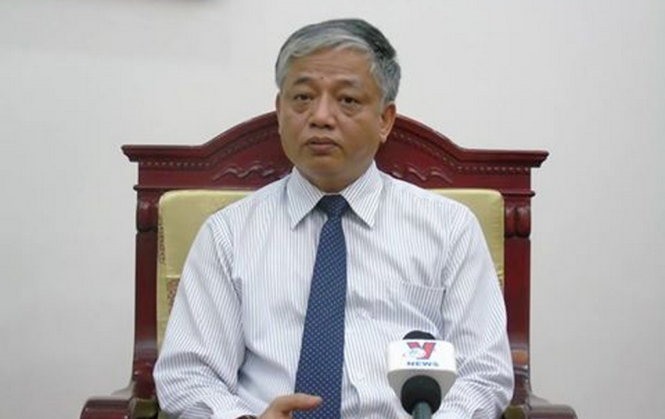 Opinion
Opinion

Deputy Minister of Labour, Invalids and Social Affairs, Doãn Mậu Diệp, talks to Hải Quan (Customs) newspaper about solutions to ease the burden of social insurance fund for retirees
 |
| Doãn Mậu Diệp |
Doãn Mậu Diệp, Deputy Minister of Labour, Invalids and Social Affairs, talks to Hải Quan (Customs) newspaper about solutions to ease the burden of the social insurance fund for retirees
Many enterprises have claimed that the payment for social insurance in Việt Nam is quite high and have proposed to decrease the rate. What do you think about this?
The rate of social insurance in Việt Nam is 32.5 per cent of an employee’s monthly salary, of which the employee pays 10.5 per cent while the employer pays 22 per cent.
However, the social insurance benefit rate of Việt Nam is now among the highest in the world, at 75 per cent, while some developed countries only have a 50 per cent rate.
Statistics from recent years show that the rate between payer and beneficiary has narrowed, greatly affecting the social insurance fund.
Specifically, in 2000, the rate was 30 payers to every one beneficiary, but in 2004, the rate was 19 to one. In 2014, the rate reached 8.7 on one and in 2020, the rate is estimated to hit six on one.
In addition, early retirement in the context of increasing longevity has been and will be a big burden on the social insurance fund. Accordingly, the current average retirement age is 54.2 and 52.6 for women. The average lifespan of retirees is 79.5, in which men are expected to live until 79 while women are expected to live until 80. So in average the average time for the retiree to enjoy social insurance is 25.3 years, with 24.9 years for men and 27.4 years for women. However, the social insurance contribution is just enough for 10 years. So who will take responsibilities to pay for the remaining time?
Do you think we should re-calculate to decrease the rate of social insurance payment as well as the rate of benefit?
The living condition of retirees is always a top concern for policymakers.
Research has shown that retired employees still face many difficulties, so decreasing the benefit rate is impossible. The proposal to decrease payment is also difficult, as we are regulating that the payment for retirement insurance fund is 22 per cent of both the employer’s and the employee’s monthly salary.
In a simple calculation, an employee with 30 years of participation in social insurance with the rate of 22 per cent so he/she pays 66 months of salary in total. When he/she retires, he/she will enjoy 75 per cent of the payment, which equals to 88 months of retirement salary without interest rate, or maximum 120 months with interest.
Let’s look at a more detailed example. An employee retires at 60, and his/her average life span goes another 19 years. The payment for social insurance he/she had paid is only enough for 10 years. For the subsequent nine years, the social insurance fund will have to pay. At that time, an unbalanced social insurance fund is unavoidable.
Is raising the retirement age a solution to avoid the risk of unbalanced social insurance funds?
It is just one of the solutions.
Accordingly, if we increase the retirement age by two years, the employees who join in social insurance will pay the fund for two more years. That will help ease up to four years for the burden of social insurance fund.
However, the unbalance is now a gap of nine years, so even if we raise the retirement age to two or three years, it would just ease part of the unbalance.
Instead, we need to implement all solutions synchronously by expanding social insurance coverage and simplifying the procedures to join social insurance.
At the same time, relevant authorities should join hands in increasing the coverage of social insurance by disseminating and encouraging non-State workers to join the social insurance system and let them see the benefit of social insurance after retirement. — VNS









